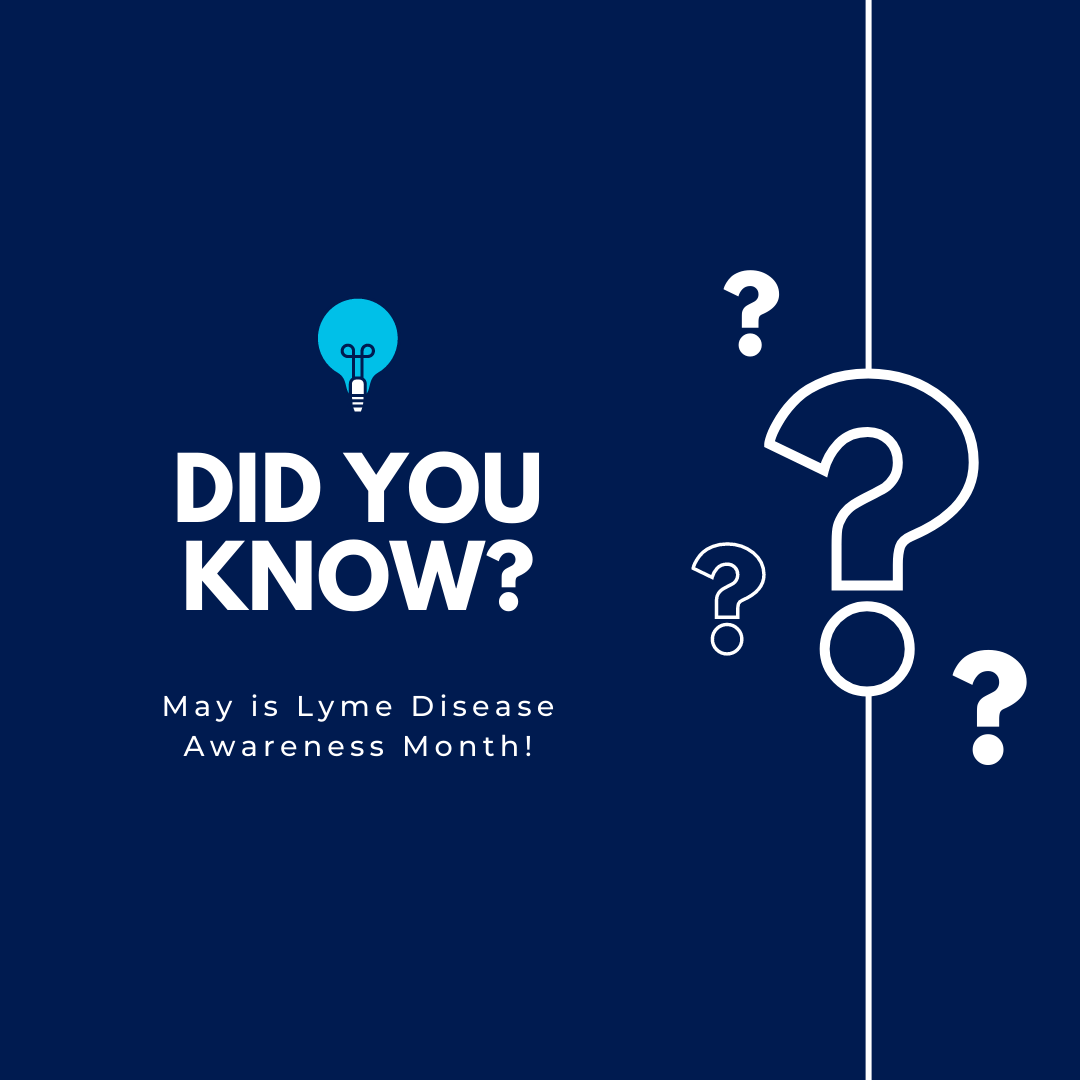
Are you a GLA supporter who wants to help spread awareness during Lyme Disease Awareness Month? Read below!
What is Lyme disease?
Lyme disease is a bacterial infection transmitted by the bite of a black-legged tick, also known as a deer tick. When an infected tick bites you or your pet, it can transmit Borrelia burgdorferi, the bacteria that causes Lyme disease. Early symptoms of Lyme disease can include a rash, fever, and flu-like symptoms. If diagnosed and treated early, many patients recover. However, some 10-20% of those patients go on to develop persistent symptoms. Moreover, cases that are not diagnosed and treated early can become much more serious, leading to long-term health problems, reduced quality of life, and, in rare cases, even death.
Why should you care about Lyme disease?
Anyone who spends time outdoors is at risk for Lyme disease. No longer just an issue in the woods of New England, Lyme disease has spread throughout the United States and world, with 476,000 known cases in the U.S. alone every year. Ticks live in the woods but also in leaf piles, on lawns, in beach grass, on stone walls, and in shrubs. And they don’t just carry Lyme disease. Black-legged ticks can transmit other serious illnesses like babesiosis, anaplasmosis, and Powassan virus. There are also other kinds of ticks that carry other illnesses (see GLA’s tick table to find out about ticks prevalent in your area and what pathogens they can transmit). Children ages 3-14 are at highest risk for Lyme disease, and pets are high-risk too, since both love to play outside.
How can you spread Lyme disease awareness?
-
Give prevention tips
The best way to prevent Lyme disease is to Be Tick AWARE. This means:
- Avoid areas where ticks live. Ticks thrive in places like wood piles, leaf litter, long grass, beach grass, brushy areas, stone walls, and perimeters where the lawn meets the woods.
- Wear light-colored clothing to spot ticks more easily: long-sleeved shirt tucked in at the waist, long pants tucked into high socks, closed-toed shoes, and a hat with your hair tucked in, if possible. Do not walk in the grass barefoot or in open sandals, even if it’s a shortcut.
- Apply EPA-approved tick repellent (such as picaridin or DEET) to skin and insecticide (such as permethrin) to clothing, and shoes as directed. Watch video to learn how to properly apply repellent.
- Remove clothing upon entering the home; toss into the dryer at high temperature for 10-15 minutes to kill live ticks. Putting them in the washer, however, will not.
- Examine yourself and your pets for ticks daily. Feel for bumps paying close attention to the back of knees, groin, armpit, in and behind the ears, belly button, and scalp. Check everywhere—ticks love to hide where the sun don’t shine.
-
Follow GLA on social media
We will be sharing lots of Lyme awareness posts during Lyme Disease Awareness month! Please watch for these on Facebook, Instagram, Twitter, and LinkedIn and share them with your networks.
-
Donate to GLA to support our mission to conquer Lyme disease.
You can make a general donation to support GLA’s important work, or you can fund specific research projects like the one just launched in honor of Lyme Disease Awareness Month called, The Bartonella Discovery Program. Learn more about this exciting research and how you can support it here.
Lyme disease and other co-infections are serious illnesses. With your help, we can spread awareness, fund research, and prevent suffering.
